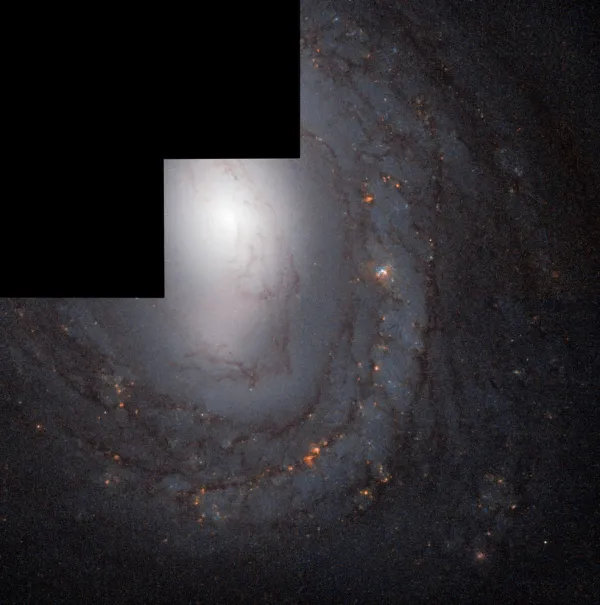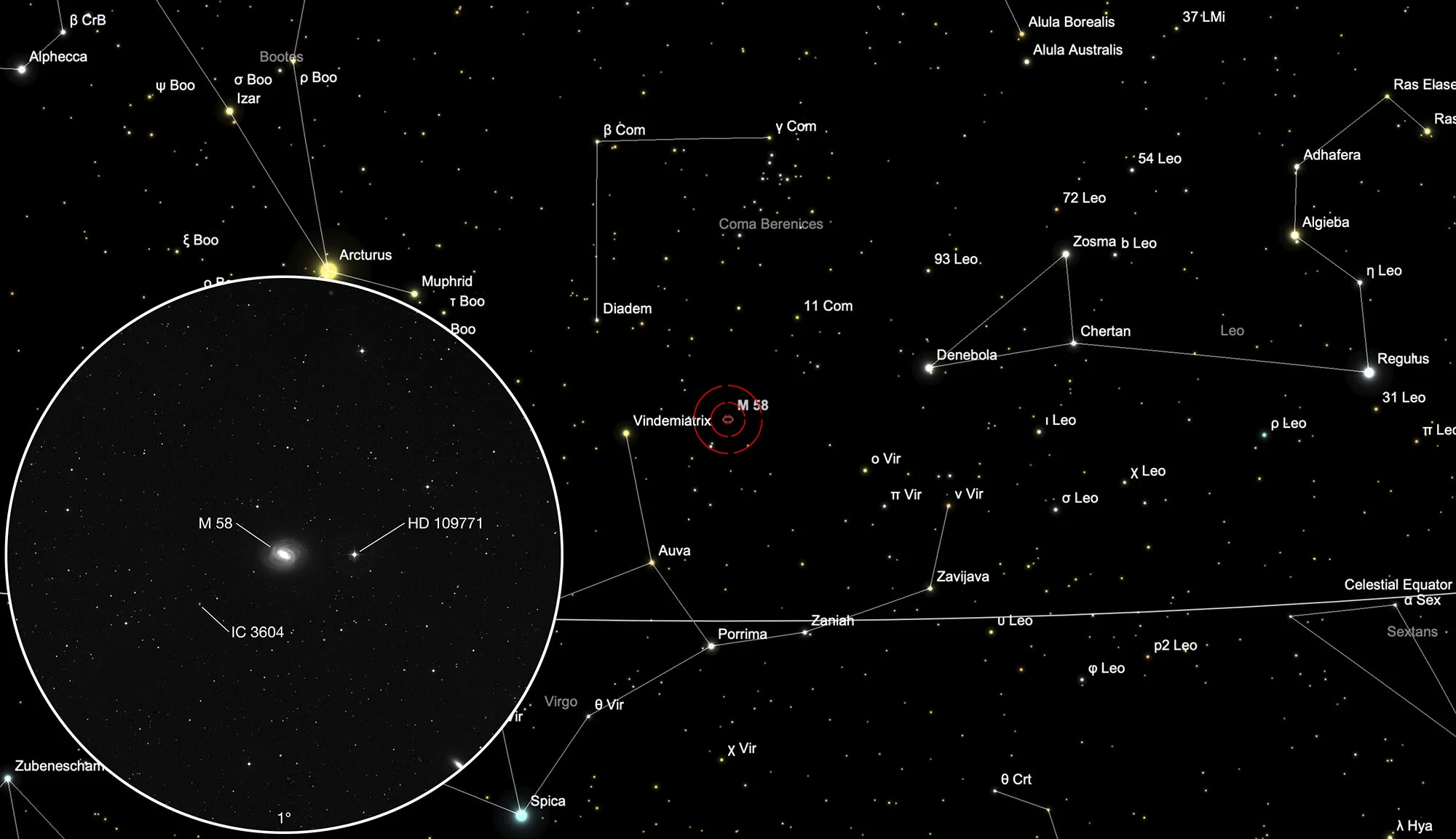Galaxy Messier 58

History
The galaxy M 58 was discovered on 15 April 1779 together with M 59 and M 60. He wrote: «Very faint nebula discovered in the Virgo, almost on the same parallel as ε [Virginis], 3rd magnitude. The slightest light to illuminate the micrometer wires makes it disappear.» He published his discovery on the map for the comet of 1779, which passed so close to the galaxies on April 13th and 14th that it appeared in his telescope in the same field of view as the galaxies and outshone them, which is why he first took over the galaxies discovered the following night. [217]
The small galaxy IC 3604 was discovered on 10 May 1904 by the American astronomer Royal Harwood Frost. [277]
Physical Properties
This is a Seyfert galaxy of the morphological type according to de Vaucouleurs SAB(rs)b and the nuclear activity class LINER Sy1.9. The heliocentric radial velocity is 1517 ± 1 km/s and it is 20.1 ± 1.4 Mpc (around 65 million light years) away from us. [194]
Although the core of M 58 appears bright, it is rather dark compared to other spiral galaxies. It is home to a supermassive black hole of around 70 million solar masses. A narrow ring around the galaxy core (ultra-compact nuclear ring) is the main area of the high rate of star formation, which is a rather rare phenomenon in galaxies. Long arms twist from the core. A very low proportion of hydrogen means that few new stars are formed in the arms. This could be the result of gravitational interaction with other galaxies in the Virgo cluster. Two supernovae (1988 and 1989) have so far been discovered in M 58. [215]
The galaxy IC 3604 is of type Sa. It has nothing to do with M 58 and is there by chance. With a heliocentric speed of 13,234 ± 8 km/s, it is 200 ± 14 Mpc away from us - around ten times further than M 58. [194]
| Name | RA | Dec | Type | bMag | vMag | B-V | SB | Dim | PA | z | D(z) | MD | Dreyer Description | Identification, Remarks |
|---|---|---|---|---|---|---|---|---|---|---|---|---|---|---|
| NGC 4579 | 12 37 43.7 | +11 49 06 | Gx (SBb) | 10.5 | 9.7 | 0.8 | 13.1 | 6 × 4.8 | 95 | 0.005060 | 21.37 | 19.580 | B, L, iR, vmbM, r | h 1368; GC 3121; M 58; UGC 7796; MCG 2-32-160; IRAS 12351+1205; CGCG 70-197; VCC 1727 |
| IC 3604 | 12 38 20.7 | +11 43 50 | Gx (Sa) | 16.2 | 15.3 | 0.9 | 12.1 | 0.3 × 0.2 | 170 | 0.044144 | 186.4 | F, vS, R, lbM |
Finder Chart
The galaxy M 58 is located in the constellation Virgo, about 6° west of the star Vindemiatrix (ε Virginis), a third on the way to the star Denebola (β Leonis). The best time to observe is from December to September.
